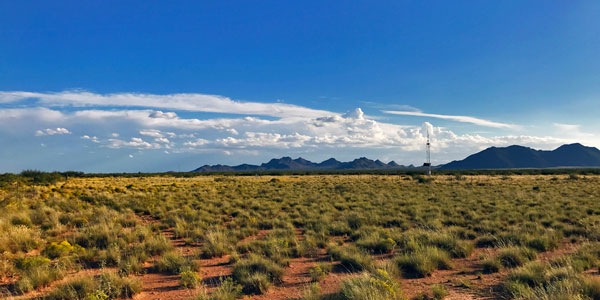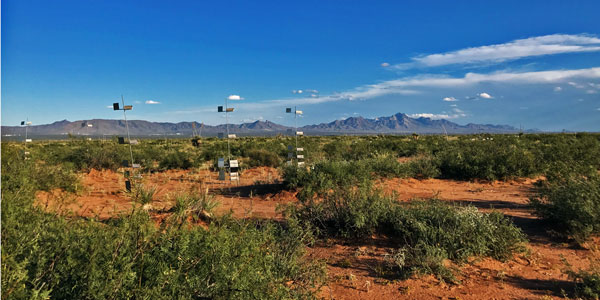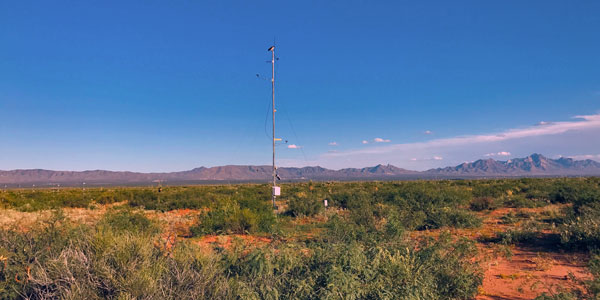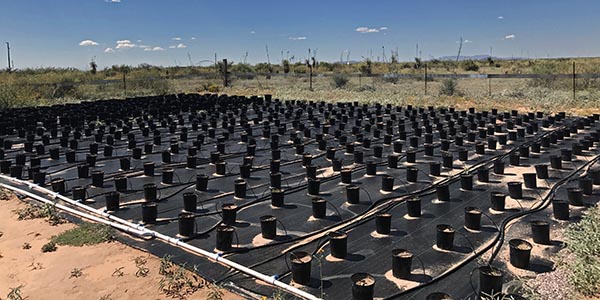Summary
The conversion of grassland to a desert with sparse shrubs, or desertification, is occurring in areas across the world. In many cases, desertification replaces plants that livestock and wildlife prefer to eat with shrubs that are difficult for them to digest. This problem therefore threatens the livelihood of farmers and ranchers while also jeopardizing wildlife habitat. Despite the widespread occurrence of desertification, the exact causes are difficult to pinpoint. Many scientists suggest that when grazing animals choose to eat grasses over shrubs, the shrubs take over. However, desertification has often been observed in areas without livestock, so there may be multiple causes for desertification.
This research intends to discover if desertification in areas with low rainfall (which tend to be sandier) is due to sand being blown by the wind (sandblasting). Windblown sand can do two things that might cause desertification: 1) erode soil and decrease its fertility and 2) damage grass plants. Because grasses require richer soils and are more fragile than shrubs, shrubs may be at an advantage where there is more wind and soil fertility is lower. Through this research, undergraduate students and a postdoctoral researcher will be trained. Outreach to K-12 teachers and students will be conducted, and will include individuals from underrepresented groups.m
This research intends to discover if desertification in areas with low rainfall (which tend to be sandier) is due to sand being blown by the wind (sandblasting). Windblown sand can do two things that might cause desertification: 1) erode soil and decrease its fertility and 2) damage grass plants. Because grasses require richer soils and are more fragile than shrubs, shrubs may be at an advantage where there is more wind and soil fertility is lower. Through this research, undergraduate students and a postdoctoral researcher will be trained. Outreach to K-12 teachers and students will be conducted, and will include individuals from underrepresented groups.m
Personnel
Dr. Furong
NIU
Postdoctoral Researcher
SNRE, UArizona
fniu@email.arizona.edu
Dr. Steven R.
ARCHER
Professor
SNRE, UArizona
sarcher@email.arizona.edu
Nathan A.
PIERCE
PhD candidate
SNRE, UArizona
npierce@email.arizona.edu
Dr. Greg
OKIN
Professor of Geography
Dept of Geography, UCLA
okin@ucla.edu
Gallery

The field site at the JER.

The meteorological station near the field plots.

Field plots at the JER

A pot experiment with automatic irrigation system in the common garden.